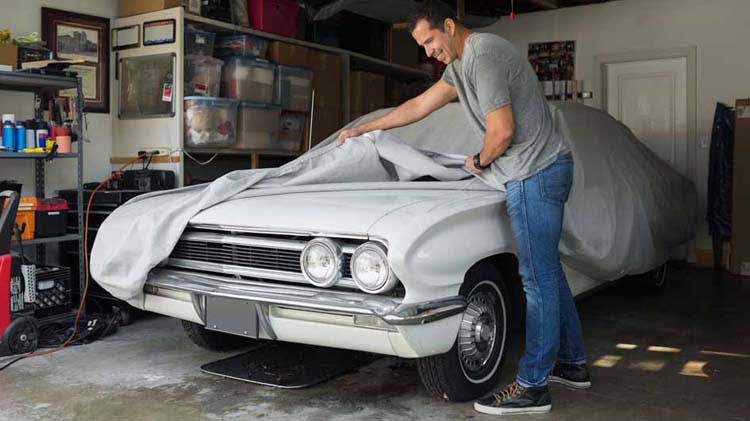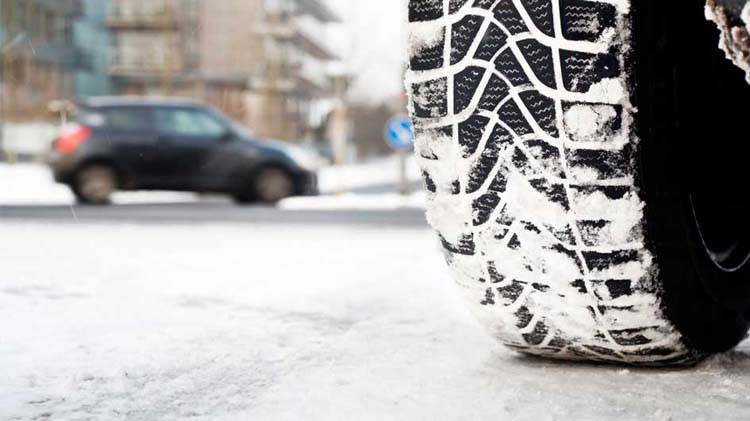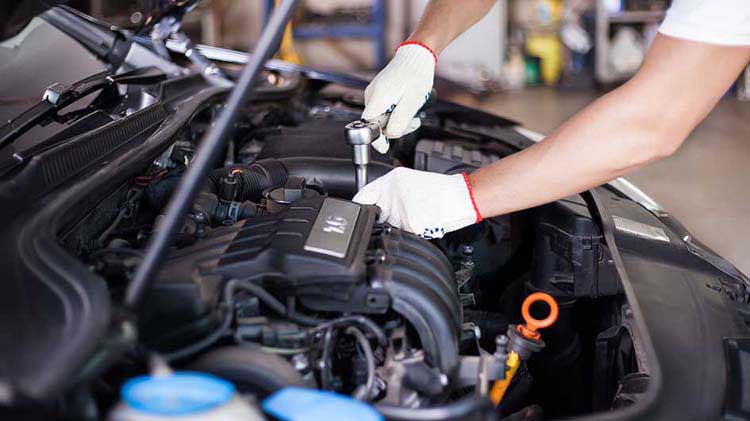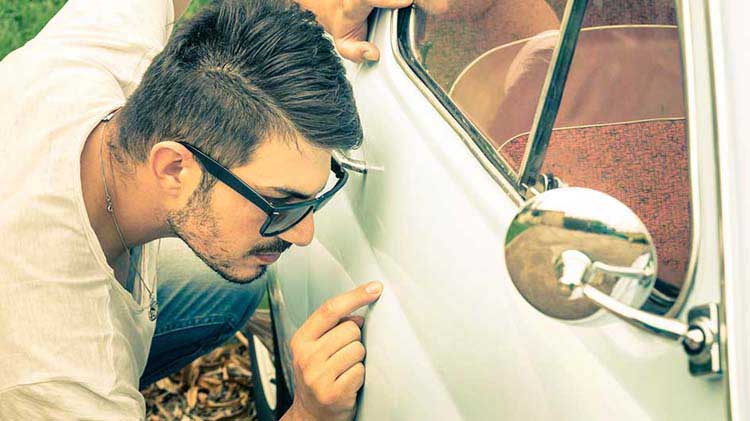Long term car storage: Is your car prepped and insured?
Long term car storage can help keep an unused vehicle in good condition. Learn how to choose a facility and what to do before storing your vehicle.
How to choose a facility
You want to ensure you're leaving your vehicle in a safe place so selecting the right facility is important.
- Read online reviews and ask friends or family members for recommendations.
- Consider the level of protection you want. Indoor vehicle storage facilities offer the most protection. While outdoor options may be less expensive, they offer less protection from the elements.
- Look at prices and special services offered, such as gated premises, video surveillance and personnel that will regularly start and drive your vehicle to help maintain it.
Types of car storage facilities
There are generally three types of car storage facilities: Outdoor, covered and indoor. The one you choose depends a lot on how much protection you're looking for and how much you're willing to spend. Let's take a brief look at each one.
- Outdoor — outdoor storage and parking lots are the most common and may be the most affordable and are usually gated and monitored. However, these facilities leave your car open to the elements, which can result in damage or rust. Using a quality car cover is recommended at an outdoor facility.
- Covered — covered storage provides some protection from the sun and other weather damage. The cover is usually in the form of a canopy, or a walled in structure in a parking spot at a storage facility. It’s a nice middle ground between outdoor and indoor.
- Indoor — for better coverage, consider choosing an indoor facility. This option can help protect your car from weather-related damage. If you have a classic car or you’re utilizing a unit for winter car storage, you may want to look for a climate-controlled unit. While indoor storage is typically the most expensive option, it offers additional protection compared to outdoor alternatives.
- Personal garage — if you have the space, you can always keep the vehicle in your personal garage. Taking preparation steps and reviewing your insurance will remain an important part of your vehicle storage.
Whichever facility you select you should be mindful of the humidity and moisture levels. Humidity and moisture can lead to fungus and mold which may result in an exclusion of coverage. Review your policy or check with your agent for specific questions on fungus or mold and take the necessary steps in preparing your vehicle for storage.
How to store a car: Preparation is key
These tasks can help protect the interior and exterior of your vehicle before you put it in long term storage.
- Add fuel stabilizer to a full tank and drive for 30 to 40 miles.
- Change the oil and fill up the brake fluid, windshield fluid and coolant.
- Pull the spark plugs and spray oil onto the cylinders to help prevent rusting.
- Clean your vehicle, wax the exterior and condition the upholstery to help prevent cracking.
- Wipe down the battery and disconnect the negative cable. Or purchase a battery tender.
- Wrap or remove your wiper blades.
- Release the parking brake to help prevent it from fusing with the rotors – use a chock, or tire stopper, instead.
- Add 10 pounds of pressure to the tires to avoid deflation. You may choose to place your vehicle on jacks if the tires remain on the vehicle to avoid uneven wear or flat spots. Or remove the tires altogether and put your vehicle on blocks.
- Cover any openings, such as the tail pipe, dash vents or engine gaps, to help prevent critters from taking up residence.
- Cover the vehicle with a high-quality weatherproof cover if storing outdoors or a light cloth cover if storing indoors.
- If your vehicle is in a moist or humid environment, consider taking steps to reduce the potential for fungus or mold growth through the use of a dehumidifier or other moisture-reducing devices.
Car storage insurance
When your vehicle isn't on the road all year, you might consider adjusting your insurance while it's in storage to save money. Generally, if your vehicle is in storage for 30 days or more, you may be able to suspend liability and collision coverages and only keep comprehensive coverage. If your state sends you a letter stating you need liability insurance and that your registration may be suspended, contact your DMV and follow their procedures for when a car is in storage. Please be aware that you will need to add liability and collision back on prior to taking your car out of storage, to be compliant with state laws and have coverage if you are involved in an accident.
Comprehensive coverage pays to repair or replace a covered vehicle that's stolen or damaged by something other than collision or rolling over. Covered damages may include flood, fire, hail damage or vandalism, to name a few.
You may notice a decrease in your premium if you choose to keep only comprehensive insurance since you'd only be paying for one coverage. Keep in mind if you're still paying on your car, your lender might require you to have both collision and comprehensive coverage for the life of the loan. Always do your research before making any changes to your policy. Talk with your agent to confirm you have appropriate insurance coverage.
Get an auto insurance quote
Want to protect your car?
Can I just cancel my policy while my car is in storage?
Canceling your policy may sound like a good idea, but before doing so you should contact your agent. Canceled policies may create a gap in coverage. This could possibly put you in a higher category or may impact future eligibility. And your car won't be protected so any cost for mishaps such as fire or theft that might occur while your car is in storage comes out of your own pocket. Additionally, if you are still making payments on your car, your lender may require you to have both collision and comprehensive coverage for the life of the loan.
Getting your car out of storage
Before you hit the road, be sure to prepare the car for that first drive. Here are just a few things to remember.
- Check all the fluids to ensure nothing leaked out while stored. Using a flashlight, check the ground underneath the car looking for any leaks that might have happened.
- If you removed the tires, reinstall them. If you left them on, and before you drive the car, check the tire pressure while they're still cold. Also look for any changes in the tire – thinning tread, bulges or wear.
- If the battery was disconnected, be sure to check the terminals for any corrosion then reconnect the battery to ensure all connections are tight. Then check the battery's charge.
- If you covered any openings prior to storing your vehicle, remember to uncover them before starting the engine. Check for any signs of animals or their nests that might be in your exhaust, under the hood or any other openings.
- Before taking that first drive, start the engine and let it idle for a short time.
- If you stored your car for an extended period and only have comprehensive insurance, you'll want to contact your agent to reinstate liability coverage, and any other coverages you removed before the vehicle is driven.
Review your state’s required laws about maintaining mandatory insurance on a registered car and talk to your agent to go over your options before storing your car or changing coverages. You can get an auto insurance quote now, or give us a few details and a State Farm® agent will reach out to you.
The information in this article was obtained from various sources not associated with State Farm® (including State Farm Mutual Automobile Insurance Company and its subsidiaries and affiliates). While we believe it to be reliable and accurate, we do not warrant the accuracy or reliability of the information. State Farm is not responsible for, and does not endorse or approve, either implicitly or explicitly, the content of any third-party sites that might be hyperlinked from this page. The information is not intended to replace manuals, instructions or information provided by a manufacturer or the advice of a qualified professional, or to affect coverage under any applicable insurance policy. These suggestions are not a complete list of every loss control measure. State Farm makes no guarantees of results from use of this information.
This is only a general description of coverages and is not a statement of contract. Details of coverage or limits vary in some states. All coverages are subject to the terms, provisions, exclusions and conditions in the policy itself, and in endorsements.
State Farm Mutual Automobile Insurance Company
State Farm Indemnity Company
Bloomington, IL
State Farm County Mutual Insurance Company of Texas
Richardson, TX




